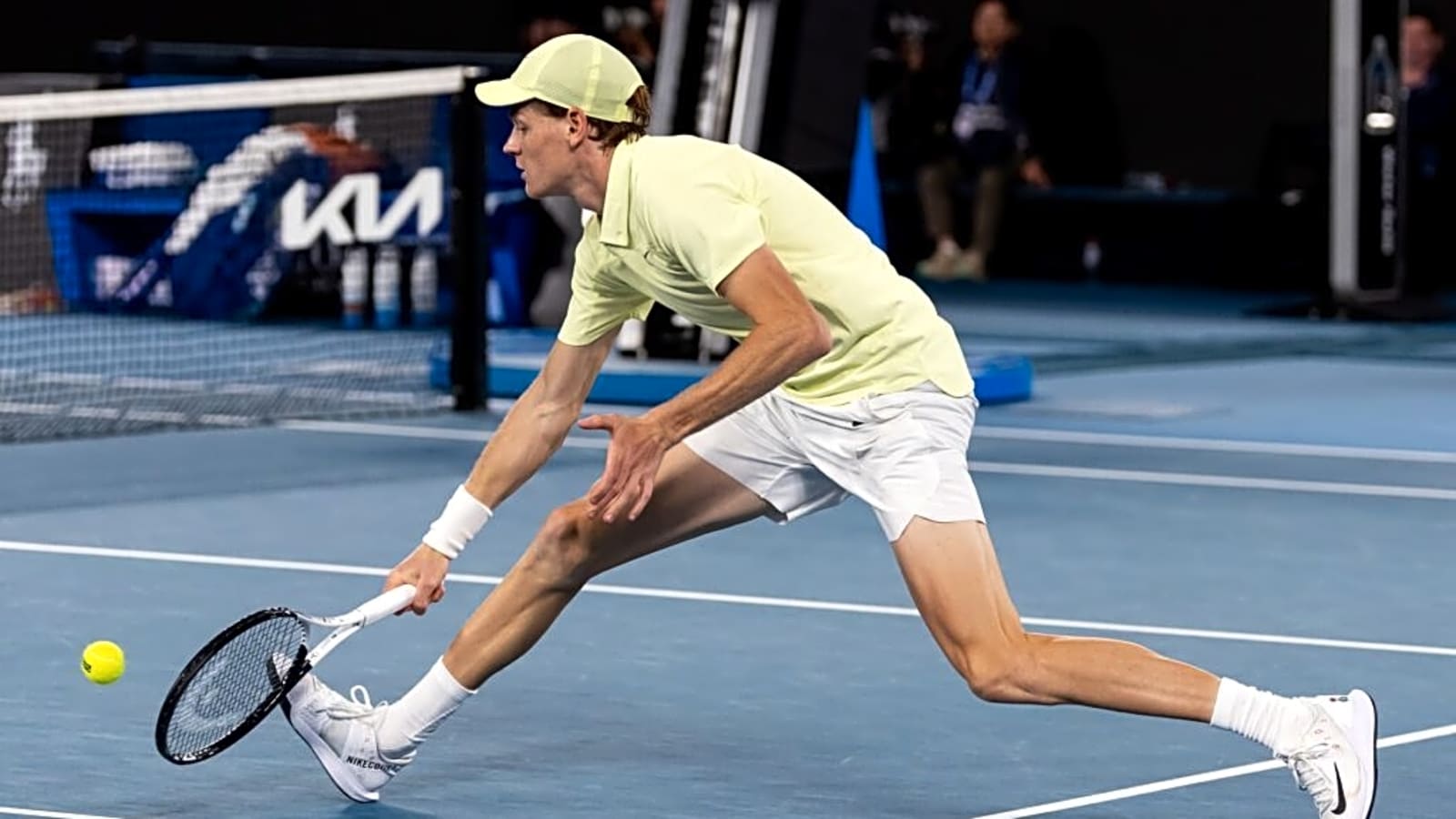
Tennis is one of the few one-on-one sports where a single season is played on multiple surfaces, each with different bounces, speeds, and movement demands. This variety is a defining feature of the game. The uncertainty of a ball’s bounce, the movement patterns each surface requires, and the tactical adjustments players must make are what make tennis truly special.
Fans eagerly anticipate the grinding nature of clay: the high bounces, long rallies, sliding, and overall slowness. They know grass brings speed, aces, and bursts of variety. And they appreciate the neutrality of hard courts, which account for over 60% of the tennis calendar.
Yet, recently, players and legends have raised concerns that tournament organisers are slowing down courts, creating uniform playing conditions, and intentionally benefiting Carlos Alcaraz and Jannik Sinner.
Federer and Zverev Speak Out
Roger Federer was the first to address the issue, speaking on Andy Roddick’s Served podcast:
“I understand the tournament directors who, based on their instructions, try to make the courts slower,” Federer said. “This benefits those who need to hit extraordinary winners to beat Sinner, because if the court is fast, they might only need a couple of well-timed shots to win. Tournament directors think: ‘I’d rather have Sinner and Alcaraz in the final, you know?’ In a way, it works for tennis.”
And now, after winning his first-round match in Shanghai, Alexander Zverev echoed the Swiss’s comments with something similar of his own.
“I hate when it’s the same (speed), to be honest,” the world No. 3 said. “Tournament directors are going in that direction because they want Jannik and Carlos to do well every tournament…ou couldn’t play the same tennis on grass, hard, or clay. Now you can play almost the same way everywhere.”
So, with court homogenization now being a topic of discussion almost every week, is it fair to ask: Does tennis have a homogenization problem?
Hard Court Trends Recently
Of the 14 biggest titles in a season, nine are played on hard courts. Historically, even within this single surface, there was variety. Some courts played fast and slick, others heavy and slow. This internal diversity helped maintain unpredictability on the hard-court swing.
However, data suggests things have shifted. Since the start of 2024, there have been 16 big tournaments on hard courts. Fourteen of them had a Court Pace Index (CPI) above 35, with only Indian Wells and Shanghai being exceptions. More strikingly, eleven events recorded a CPI above 40.
If nearly 70% of hard-court tournaments over the past 22 months have leaned towards faster surfaces, why are there suggestions that the game has slowed down?
Court Homogenisation: Not a New Phenomenon
Beyond the hard courts, although the gap between how to play on clay and how to play on grass has decreased significantly since the 1980s, this isn’t a recent development as well. In fact, both Federer and Zverev have benefited from it during their careers.
The biggest change began when Wimbledon transitioned from a mixed grass surface to a 100% perennial ryegrass surface in 2001. At that time, Federer had a match record of 4 wins and 3 losses at Wimbledon. He went on to dominate the tournament for the next decade.
Similarly, Carpet, one of the fastest surfaces in tennis, was phased out by the ATP and WTA for safety reasons. This surface strongly favoured big servers, producing short points. The player who led the charge for this surface to disappear? Roger Federer.
Back then, just like now, accusations flew that surfaces were being tailored to favour the top players of the era. Jo-Wilfried Tsonga famously remarked:
“It is a pity that these super-fast surfaces disappear,” said Jo-Wilfried Tsonga. “We are going to play tennis where the most important thing will be to have four lungs and not the variety of strokes.
“It is said that this is given at the request of Federer and Nadal. It is incredible. So, yes one day Nadal [might] ask that all tournaments be in brick dust, then what will we do?”
Similarly, when the Big 3 were collectively sweeping up the bulk of the Major titles, Greg Rusedski expressed a similar sentiment about them.
“It’s medium, medium-slow [everywhere] and this has given the Big Three a huge advantage because every tournament they go to, there aren’t big adjustments needed.”
The Best Players Adapt The Best
While Zverev criticizes homogenization, it is the very trend that has enabled his strictly linear counterpunching and big-serving game style across the season throughout his career. The same advantage that Federer feels is now being given to Sinner and Alcaraz was, at one time, given to him as well. Or perhaps, just like Federer, the ‘New Two’ are simply good enough to navigate the different speed and bounce challenges themselves.
Both Alcaraz and Sinner have reached finals on all three surfaces this year. They delivered a match for the ages on the slow Parisian clay. Each went on to win a grass-court title—Alcaraz triumphing at Queen’s, a surface notably faster than Wimbledon itself. They have since faced off in finals on slicker hard courts as well. And, while the faster conditions tend to suit Sinner more than Alcaraz, it has been the Spaniard who has come out on top in both encounters.
This adaptability underscores an important truth: The best players win because they are simply the best.
Technology and Training Have Changed the Game
Beyond the discussion of surfaces, modern tennis has been heavily shaped by technological and training advancements. Racket and string innovations now allow players to generate extreme levels of spin and power, making baseline exchanges more punishing than ever before.
Sports science has also revolutionised the physical demands of the sport. Improvements in nutrition, recovery methods, and overall conditioning have enhanced endurance, enabling players to sustain long, grueling rallies across all surfaces without breaking down physically.
At the same time, tactics have evolved in line with these advancements. The last two eras of tennis have been shaped largely by endurance and power. First came the relentless baseline consistency of Rafael Nadal and Novak Djokovic. Now, the game has shifted toward the explosive power baselining of Carlos Alcaraz and Jannik Sinner.
The More Things Change, the More They Stay the Same
Court homogenisation has been happening since the early 2000s, not just in recent years. Federer, Nadal, and Djokovic benefited from it, just as Alcaraz and Sinner are accused of doing today. Each era sees similar debates, but history shows that the best players adapt to any surface speed and still dominate.
The truth is that the truly great ones are made by their ability to thrive no matter the conditions.
More must-reads:
- Dodgers star backstop left out of lineup for NLDS Game 1 vs. Phillies
- Dolphins' situation with Tyreek Hill is complicated, but they have a firm stance on his future
- The 'MLB playoff debut strikeouts leaders' quiz
Customize Your Newsletter
 +
+
Get the latest news and rumors, customized to your favorite sports and teams. Emailed daily. Always free!








